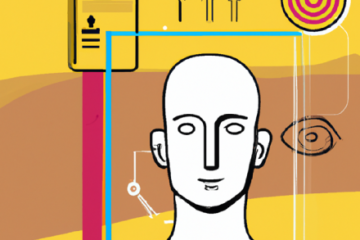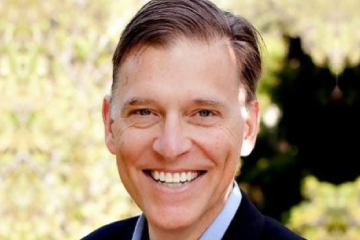Jim Tincher: 12 Big CX Ideas From Do B2B Better
VOICE OF EXPERTS
12 Big CX Ideas From Do B2B Better
Jim Tincher, CCXP, is a nationally recognized customer experience expert, journey mapper, author, and speaker. His innovative CX consultancy, Heart of the Customer, helps companies of all sizes drive customer-focused change to improve loyalty and boost revenue, and his book, How Hard Is It to Be Your Customer?, is considered a must-read for CX-focused leaders.
Customer experience (CX) is the best way to create organic growth. When you create a superior customer experience, clients prefer to work more with you, giving you improved retention and a higher share of wallet while simultaneously reducing costs.
Yet, few programs can create and prove that link. Companies collectively invest billions of dollars in customer experience programs, but few can show that this investment has tangible benefits. As a result, CX programs get cut, and turnover increases. But it doesn’t have to be that way.

In his latest book, Do B2B Better, CX thought leader Jim Tincher shows the results of two years of research identifying how some programs can create more substantial businesses through customer experience. This research wasn’t with Amazon, Warby Parker, Target, or similar companies that most CX literature includes. Instead, he and his team interviewed leaders at business-to-business (B2B) and business-to-business-to-consumer (B2B2C) companies such as Dow, Hagerty, Legrand, UKG, Wolters Kluwer Compliance Solutions, and dozens of others. Companies that aren’t necessarily household names but are growing through an improved customer experience.
Read on for 12 big ideas from Do B2B Better: Drive Growth through a Game-Changing Customer Experience.
Twelve Big Ideas
1. Most customer experience programs can’t show impact – but advanced programs can
Research from Pointillist, CustomerThink, and Heart of the Customer shows that most customer experience programs cannot show any business impact. Most estimates agree that less than 1 in 4 programs can connect to value.
This ratio drops even further when restricted to B2B companies, which typically trail others in the maturity of their customer experience program. The top causes for this failure to create impact are, in roughly equal proportion:
- Organizational complexity
- Not enough (or the right type of) staff
- Lack of leadership buy-in
Those few programs that drive business growth through customer experience treat CX as a business discipline rather than a survey program. These organizations connect the customer experience to financial value; measure and design around customer emotions; integrate operational, behavioral, and financial data with sentiment; and utilize change management best practices to integrate customer experience into business operations.
The book labels those who can show business impact as “Change Makers.” Those who cannot show business impact are called “Hopefuls;” they may be doing good work but do not know whether their work is creating impact.
2. Other companies’ CX success doesn’t matter to your leadership

While cross-industry research shows that customer experience pays, many organizations have found it challenging to achieve this same outcome at their companies.
Change Makers directly show how investments in CX measurably improve the experience, reducing calls or changing customers’ behaviors that → create more emotionally engaged customers, who → buy more and stay longer and → strengthen the company as a result.
They create, as author Jim Tincher calls it, the CX Loyalty Flywheel, showing how each step of this Flywheel leads to the next.
3. B2B and B2B2C organizations have a more complex customer experience – so they require a more deliberate approach to success
B2B and B2B2C organizations have a more difficult time because of the complexity of the relationship. Rather than selling to an individual, B2B purchases commonly involve committees with different goals to address. Creating a compelling experience requires meeting the continuing needs of many distinct individuals, from the economic decision-maker to the individual user.
B2B2C organizations, such as insurance and consumer packaged goods, must accomplish two sales: first, to their independent distribution partners, such as agents or retailers, and then to the ultimate purchaser. Continuing relationships requires solving the distribution partners’ needs and servicing the end customer in a way that makes the distribution partner happy. B2B2C organizations often need to maintain two sets of experiences – those for distribution and those of the end customer. It is not uncommon for battles to erupt over who is the “true” customer.
Measuring these experiences is complicated. Many programs use surveys, but which surveys matter for a B2B company? Can you even survey the economic decision-maker, who is typically an overworked executive? Users indirectly influence the decision to keep working with you, but how do you balance those individual preferences when they may conflict directly with the desires of the economic decision-makers?
B2B2C companies may have challenges even surveying the end consumer, as their distribution partners typically view end consumers as “their” customers. Creating an effective program requires strong change management – a topic addressed below.
4. Different organizations receive different forms of value from the customer experience
There’s no one way to show the value of a customer experience program. Understanding how your organization measures value and connecting your customer experience program to those outcomes is crucial. Without connecting the program to hard dollars, a customer experience program is constantly threatened with losing funding to programs that can show a hard return on investment.
Some of the ways organizations measure value include:
Client retention, identifying specifically which parts of the experience are driving churn. Rather than using high-level scores, such as showing how customers with lower net promoter scores churn more often, Change Makers show which elements of the experience are causing which specific customers to churn, enabling targeted interventions.
Share of wallet, which is difficult to measure directly for most industries. However, Change Makers will show how engaged customers purchase more categories of products or have higher order velocity to show how the company earns the right to do more business with these customers.
Customer Lifetime Value captures annual spending combined with expected retention. Costs may also be involved. This was the most common method Change Makers used, although it was calculated differently by each organization.
Net Revenue Retention, which combines retention with changing spending, is a variation of Customer Lifetime Value that focuses on the current year compared to the last. In this book, the author argues that this is the best measurement for most customer experience programs.
Annual Recurring Revenue adds new customers to Net Revenue Retention and is standard for Software as a Service (SaaS) companies.
Innovation is a desirable outcome for many. Two ways to measure it include when customers are willing to conduct joint innovation or having customers willing to purchase newer products, which typically have higher risks and a higher margin.
Referrals are a common soft outcome from customer experience, as the survey question, “How likely are you to recommend [company]?” is the foundation of many CX programs. However, intent to refer often varies from actual referrals, and few programs can measure referrals and tie them to individual customers, limiting the usefulness of this metric.
5. Emotions accelerate the Flywheel
While many view B2B decision-making as rational and price-based, research from multiple sources shows that B2B decision-making has a significant emotional component. Because of the high impact of B2B decisions, emotions matter more than in consumer decisions. While a consumer who selects the wrong smartphone is annoyed, the business leader selecting the wrong software vendor can create process slowdowns and inaccurate decisions, ultimately costing millions of dollars. The fear of a wrong decision is a critical factor in the purchasing process.
Winning a B2B sale requires creating trust. Continuing the relationship requires the company to build on that trust, reinforcing the idea that the client made the right decision to select the organization.
Much has been written about creating an effortless experience to create ongoing loyalty. However, the research behind the effortless experience was based on calls to the contact center, a distinct component of the customer lifecycle. More comprehensive research shows that emotions are the best predictor of loyalty.
6. You can measure emotions
Change Makers are significantly more likely to measure the emotions in the experience. The most common method is through surveys, but it is possible to use text and voice analytics to measure the emotional experience.
B2B and B2B2C organizations have found that emotions best predict financial outcomes, predicting retention and enrichment (upsells and cross-sells). Yet, few programs measure specific emotions in their customer experience. The book includes a framework to determine which emotions are the most critical for your brand, and how to measure these emotions on an ongoing basis.
7. The “right” emotion varies by company and brand promise
Every company’s customer experience creates distinct emotions. Change Makers identify the emotions of their most loyal customers – those who call them first when there’s a need and give a higher share of wallet – from the rest. They then measure this emotion as a part of their program, showing how improvements to these emotions lead to more substantial business outcomes.
The targeted emotion could be trust and confidence but can also include enjoyability or happiness. Change Makers also monitor negative emotions such as frustration or annoyance. Once identified, the positive emotions become a design target for experience design.
8. Change Makers incorporate the voice of the business with the voice of the customer
Hopeful companies – most programs – use surveys to measure the journey. Change Makers incorporate the business data to show the actual customer journey and how it connects to the customer experience and financial outcomes. The book calls this Customer Ecosystem Data, including the behavioral, descriptive, financial, and operational data that gives more context to the experience.
For example, do health insurance customers who file less than three claims renew at a higher or lower rate than those with more? Do customers who called the contact center attrit at different levels than those who used online channels?
9. Change Makers use varied types of data and incorporate those into survey reporting
Most B2B programs have a response rate of 10 to 15 percent for their surveys, meaning that most customers never give feedback to the CX team. But every customer provides feedback through their behaviors. Change Makers use behavioral data as a source of the voice of the customer, combining it with sentiment data to create a comprehensive view of customer behaviors and needs.
They then use operational data to show the experience causing the behaviors, combining this with the sentiment for more context. For example, they might show how a drop in on-time delivery leads to increased complaints and lower survey scores. They then layer in the financial results to show how this created a drop in future orders.
For Change Makers, surveys are simply another form of data rather than the be-all-end-all of customer experience.
10. Change Makers use more technology to measure and improve the customer experience
Change Makers used 50 percent more technology in the CX tech stack than Hopeful organizations.
While all used VoC software to the same extent, Change Makers were significantly more likely to use the rest of the CX Tech Stack. The CX Tech Stack includes Customer Health Dashboards, Journey Mapping Software, and Journey Analytics to analyze and report on the journey and Journey Orchestration to change the journey around individual customer needs.

Whereas Hopeful organizations’ dashboards exclusively showed sentiment data, Change Makers integrated the Customer Ecosystem Data – behavioral, operational, and financial data – into those dashboards. These dashboards better-answered executives’ questions, generating higher engagement.
11. Change Makers use change management to engage executives
While Hopefuls acknowledged the importance of change management, Change Makers had a deliberate strategy. They first designed ways to give executives first-hand experience with the customer experience. For example, they would assign individual leaders to manage a specific account, turning the customer experience from an academic exercise to one for which they had explicit outcomes they needed to accomplish. Others created listening tours for executives to visit the contact center or created visualizations to show the vast number of communications clients received from individual business units.
They also extend this to middle managers, whose realm is where most customer experience programs go to die. Change Makers connect the customer experience to the company’s KPIs, such as inventory turn or decreased costs to serve, showing why those middle managers – who rarely have direct interaction with outside clients – should take the time to focus on the customer.
12. Customer experience only works when it is an entire company endeavor
The best programs engage the entire organization in the customer experience, enlisting volunteers from throughout the company to be the eyes and ears of the CX program. They don’t call it “change management” – as nobody wants to be changed – but they do find ways to engage frontline staff in improving outcomes through customer rooms, training, and sharing customer videos. They also create explicit messaging to show how frontline employees can do specific actions to improve outcomes for customers and the company itself.
Jim Tincher, CCXP, is a nationally recognized customer experience expert, journey mapper, author, and speaker. His innovative CX consultancy, Heart of the Customer, helps companies of all sizes drive customer-focused change to improve loyalty and boost revenue, and his book, How Hard Is It to Be Your Customer?, is considered a must-read for CX-focused leaders.



